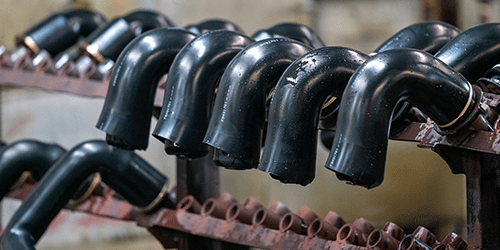Even though there are many major differences between plastic and rubber, these materials can be used together for many things also. The principle difference between plastic and rubber is that plastic can be melted and reused. On the other hand, rubber once in its form remains solid. However, for engineers, plastic and rubber are both viable options.
For your ease, we have underlined when to use plastic and when to use rubber as extrusions.
Plastic can be used when a component requires hardness or rigidity. The rubber holds no comparison in such situations. This is because rubber compounds can only achieve a maximum durometer or Shore A rating of 90.
Custom plastic extrusions are more cost-effective, are more easily extruded, and are more suitable to meet aesthetic requirements, such as pigmentation. However, when it comes to creative materials, rubber is the way to go.
In components that require compression set properties, rubber is most often used. In harsh operating environments, rubber also out does plastics. For instance, silicon components have a temperature range that can go up to 450 degrees Fahrenheit. This isn’t even close to the range of plastic materials.
Rubber extrusions can be used to make pipes and hoses of different shapes and sizes. The pipes can be made as long as 60 feet and are, therefore, perfect for pipe manufacturing industries.
EPDM, a reasonably priced rubber, has outstanding qualities—it can withstand weather and is resistant to ultra-violet radiation and ozone.
Rubber is not only resistant to the above-mentioned situations. Compared to plastic, it can resist certain chemicals. Rubber is also used when sound and vibration-reducing qualities are a necessity.
We can’t say that one material is better than the other. Both materials have their advantages and disadvantages, which play out differently in different situations. The decision to choose plastic or elastic will depend on the application you need the material for. For instance, TPV can be a great substitute for EPDM seal. In doing so, TPV will add to the aesthetic quality and will be of a lower weight. However, the EPSM would be of a lower price, making it more cost-effective than TPV.
To get the best plastic and rubber options, it would be best to consult manufacturers who have experience in such situations. Sperry & Rice, LLC, have tremendous amounts of experience when it comes to rubber and plastic extrusion.
We believe that each customer’s need is unique and, hence, we make sure that we stand with our customers every step of the way. From identifying the right compound to the most cost-effective manufacturing methods, we assist our customers in making the right decision. We customize rubber and plastic extrusions so that we can meet the demand put forward by you. Contact us today and solve all your problems.
